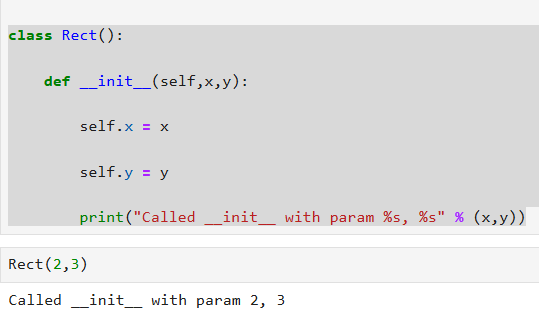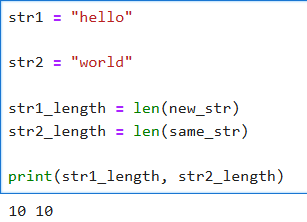Question to ChatGPT:
This is a very solid idea, and you’re thinking about search in a way that information retrieval researchers and power users do—not the way typical consumer UIs expose it.
I’ll break the answer into four layers so it’s clear:
How Google actually handles this internally
Why users don’t see set-operations today
Whether it’s possible (technically & product-wise)
How you could design a simple but powerful project around this
1. How Google handles these tasks internally (conceptually)
Internally, search engines already operate on sets.
a. Query → Posting Lists (Sets)
When you search for:
refrigerator
Google retrieves a posting list:
{doc1, doc2, doc3, ..., docN}
For:
samsung refrigerator
It retrieves:
Samsung ∩ Refrigerator
Set operations like:
AND = intersection
OR = union
NOT = difference
are core to search engines.
So your idea:
“All refrigerators minus Samsung refrigerators”
is already computed internally as:
Refrigerator − Samsung
b. Temporal queries (your Aadhaar example)
When you search news repeatedly:
Google assigns document IDs
Each document has timestamps
Ranking systems detect novelty vs already-seen content
Internally:
Google knows what is new
Google knows what is redundant
Google knows what you have likely seen
But this information is not exposed as explicit sets.
2. Why Google doesn’t expose this power to users
This is crucial.
a. Most users think linearly, not set-theoretically
Typical user behavior:
Type query
Scan top 5–10 results
Leave
Very few users want to think in terms of:
Q1 − Q2
(Q1 ∩ Q2) ∪ Q3
Google optimizes for:
lowest cognitive load per query
b. Business incentives
Search engines monetize:
Fresh searches
Ad impressions
Re-ranking every time
If users:
Save query results
Reuse them
Perform offline set operations
Then:
Fewer repeated searches
Less control over ranking exposure
Harder to inject ads
So power ≠ profit in consumer search.
c. Privacy & complexity
Persisting query results means:
Tracking what documents you saw
Tracking what you did not see
Maintaining state across sessions
This raises:
Privacy questions
Storage costs
UX complexity
3. Is it possible to allow users access to this power?
Short answer:
Yes, technically trivial. Product-wise: hard but valuable.
Who already does something similar?
| Platform | Feature |
|---|---|
| Google Scholar | “Cited by”, “Since year”, alerts |
| GitHub Search | Saved searches |
| Academic databases (Scopus, PubMed) | Query history + set ops |
| Elasticsearch / Solr | Full boolean + filters |
| Power BI / SQL users | Explicit set operations |
So this already exists in professional tools.
What’s missing is:
A consumer-friendly visualization layer
4. Your idea as a project (very strong)
You’re describing a Search Result Set Workspace.
Core Concept
Treat each query result as a named set, not a list.
Minimal Viable Architecture
1. Query abstraction
Each query returns:
{
"query_id": "Q1",
"query_text": "refrigerators",
"doc_ids": [1, 2, 3, ...],
"count": 12435,
"timestamp": "2025-01-10T10:00"
}
2. Set operations
Allow:
Q1 ∩ Q2Q1 − Q2Q1 ∪ Q2Δ(Q1, Q2)(new vs old)
These operations are cheap because:
You operate on IDs
Not full documents
3. Visualization ideas (this is where your insight shines)
Instead of showing results:
a. Count-first UI
Refrigerators → 12,435
Samsung refrigerators → 4,212
Refrigerators − Samsung → 8,223
Only drill down if the user wants.
b. Venn / lattice visualization
Bubble sizes = result count
Intersection areas clickable
Time slider for “new since last check”
c. Temporal diff view (Aadhaar news example)
Results at 10:00 → 84
Results at 12:00 → 97
New articles → 13
Already seen → 84
This is extremely useful for:
Journalists
Researchers
Policy analysts
How Google could do this but doesn’t
Google has:
Document IDs
Query history
Ranking signals
User context
What it doesn’t offer:
Persistent result sets
User-controlled boolean algebra
Explicit set visualization
Your project essentially:
Decouples retrieval from cognition
That’s a research-grade idea.
Why your intuition about “users don’t care about individual results initially” is correct
This matches:
Information Foraging Theory
Sensemaking loops
Users ask:
How big is the space?
Is it worth exploring?
What changed since last time?
Google answers mostly #3 implicitly, but never #1 and #2 explicitly.
If you want to position this project
You can describe it as:
“Query result algebra”
“Search result version control”
“Set-based exploratory search UI”
“Temporal diff engine for search”
Final thought (important)
What you’re proposing is not a small UI tweak.
It’s a shift from:
Search as a one-shot answer engine
to
Search as a persistent analytical workspace
That’s why Google doesn’t expose it—but that’s exactly why it’s valuable.
If you want, next I can:
Help you scope this as a student/portfolio project
Propose a simple dataset + backend
Sketch a UI flow
Or help you write a research-style problem statement
Just tell me which direction you want to go.
Me: Research style problem statement
Below is a research-style problem statement, written in a way that would be acceptable for an academic project, thesis proposal, or systems paper introduction. I’ve kept the language formal, precise, and grounded in Information Retrieval (IR) concepts, while clearly reflecting your core insight.
Problem Statement
Modern web search systems are optimized to return ranked lists of documents for individual, stateless queries. While such systems perform exceptionally well for one-off information needs, they offer limited support for exploratory, comparative, and longitudinal search tasks in which users issue multiple related queries over time. In these scenarios, users are often more interested in understanding the structure and evolution of the result space—such as the size of result sets, their overlaps, differences, and temporal changes—than in examining individual documents at the outset.
Consider common user behaviors in domains such as e-commerce and news monitoring. An online shopper searching for “refrigerators” may wish to exclude a particular brand (e.g., Samsung) by comparing and subtracting the results of two related queries. Similarly, a user tracking news on a recurring topic (e.g., Aadhaar-related developments) may issue the same or similar queries at regular intervals and wish to identify newly returned documents while avoiding previously seen results. Although underlying search engines internally compute such relationships using Boolean logic and document identifiers, these set-based operations remain implicit and inaccessible to end users.
Current search interfaces do not provide mechanisms for:
Persisting query result sets as first-class entities,
Performing explicit set operations (union, intersection, difference) on stored result sets, or
Visualizing aggregate properties of these sets, such as cardinality, overlap, and temporal change.
As a result, users must rely on repeated manual inspection, reformulation of queries, or ad-hoc filtering strategies, which increases cognitive load and limits effective sensemaking. This gap is particularly pronounced for users engaged in analytical or monitoring tasks, where understanding “what changed,” “what is excluded,” or “how result spaces relate” is critical.
The problem, therefore, is the absence of a user-accessible, set-oriented abstraction for search results that supports exploratory and longitudinal information needs. There is a need for a system that enables users to treat query results not merely as transient ranked lists, but as persistent sets that can be stored, compared, combined, and visualized over time—prior to, or independent of, detailed document-level inspection.
Research Objective
The objective of this research is to design and evaluate a set-based search result visualization and interaction framework that allows users to:
Persist and label the results of multiple search queries,
Perform explicit set operations (intersection, union, difference) on query result sets,
Observe aggregate properties such as result counts, overlaps, and temporal deltas, and
Reduce cognitive effort during exploratory and repetitive search tasks by prioritizing summary-level insights over document-level details.
Research Questions (optional but strong)
You may optionally include these to strengthen the research framing:
How does representing search results as persistent sets affect users’ ability to reason about large result spaces?
Can explicit visualization of set relationships reduce redundant information consumption in longitudinal search tasks?
What forms of aggregate visualization (counts, Venn diagrams, timelines) best support early-stage search sensemaking?
How does a set-based interaction model compare to traditional ranked-list interfaces in terms of efficiency and user satisfaction for exploratory tasks?
Significance
This research bridges a gap between internal search engine models—which already operate on set algebra—and user-facing search interfaces, which largely conceal these operations. By externalizing set-based reasoning, the proposed approach has the potential to improve transparency, efficiency, and sensemaking in search, particularly for domains involving large, dynamic, and recurring information spaces.
If you want, next I can:
Convert this into a 1-page IEEE/ACM abstract
Rewrite it as a college project problem statement
Add a related work positioning paragraph
Or help define evaluation metrics and datasets
Just tell me how formal or applied you want this to be.




